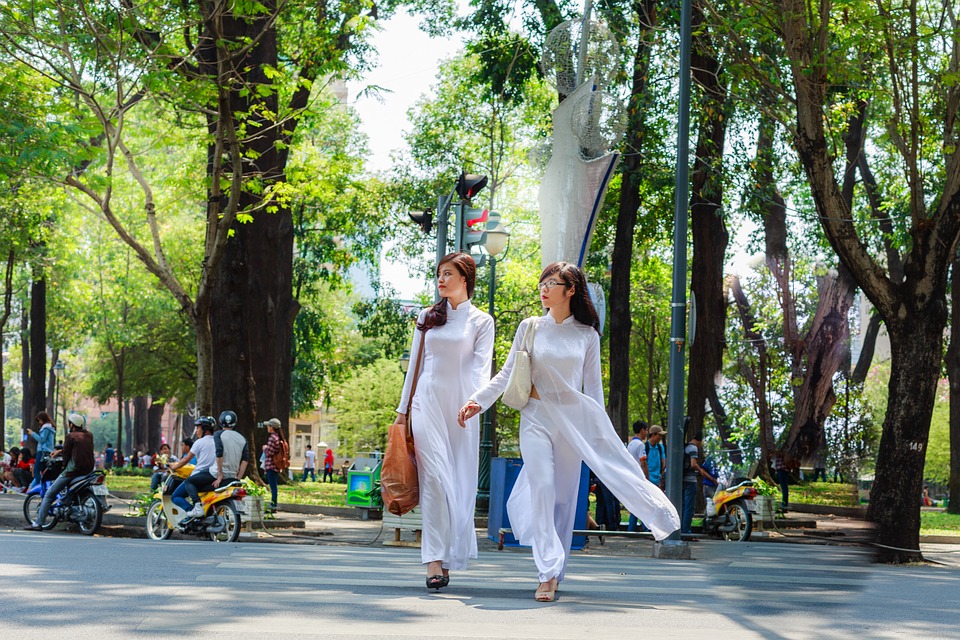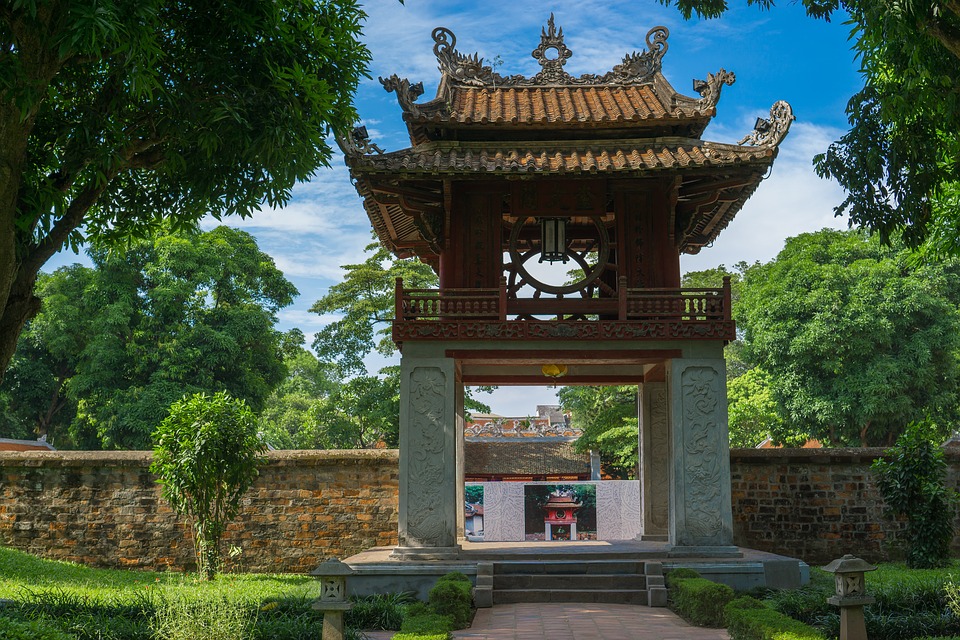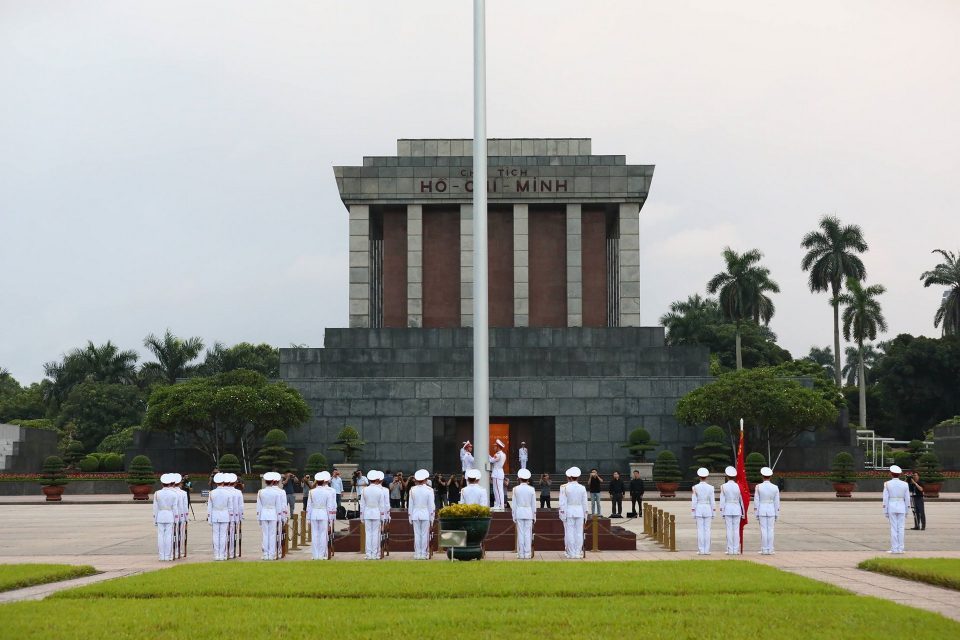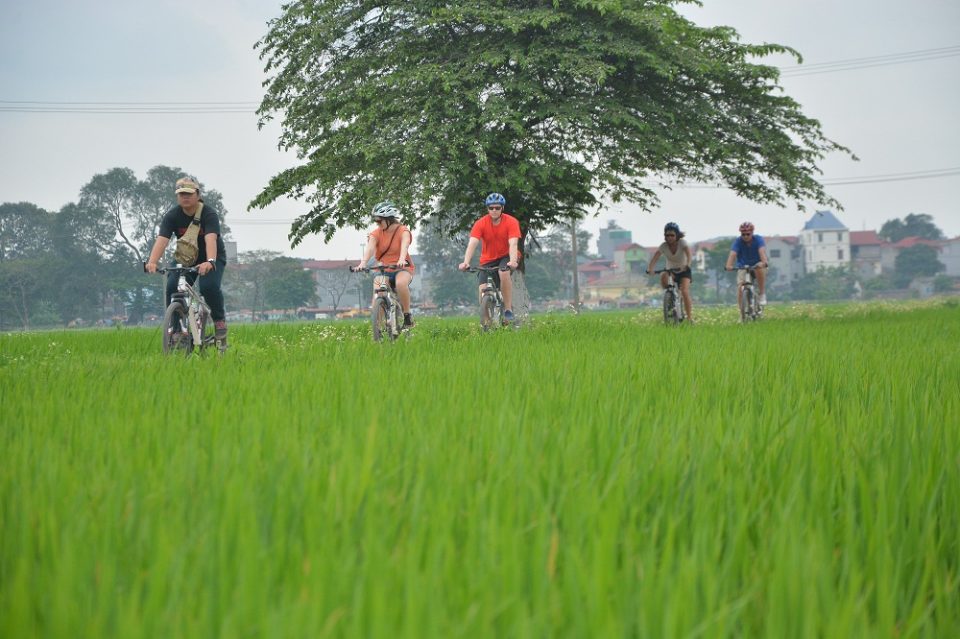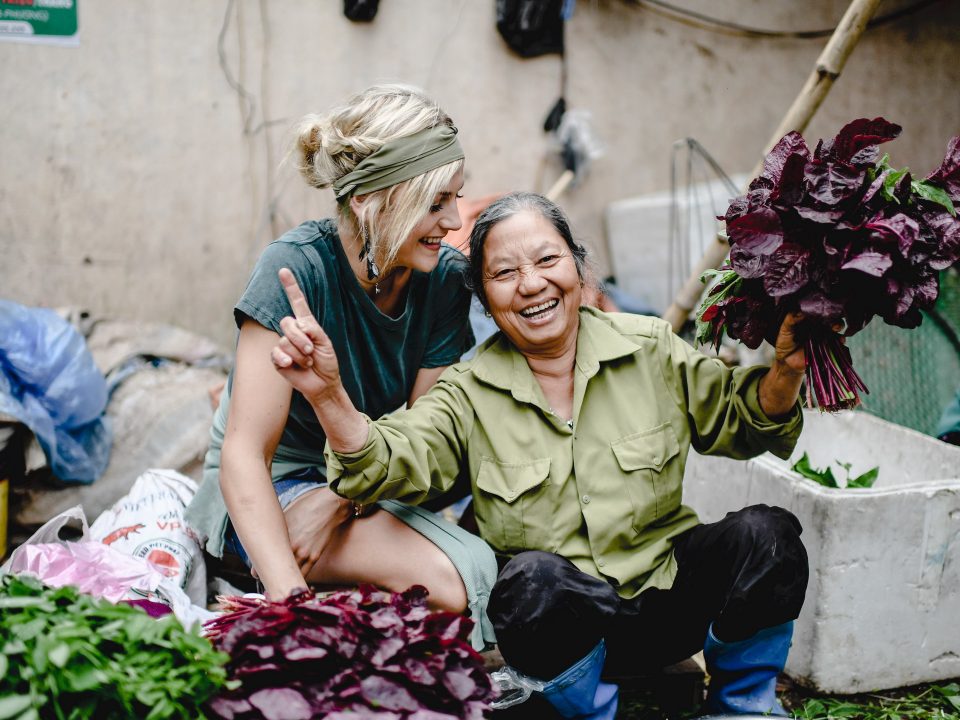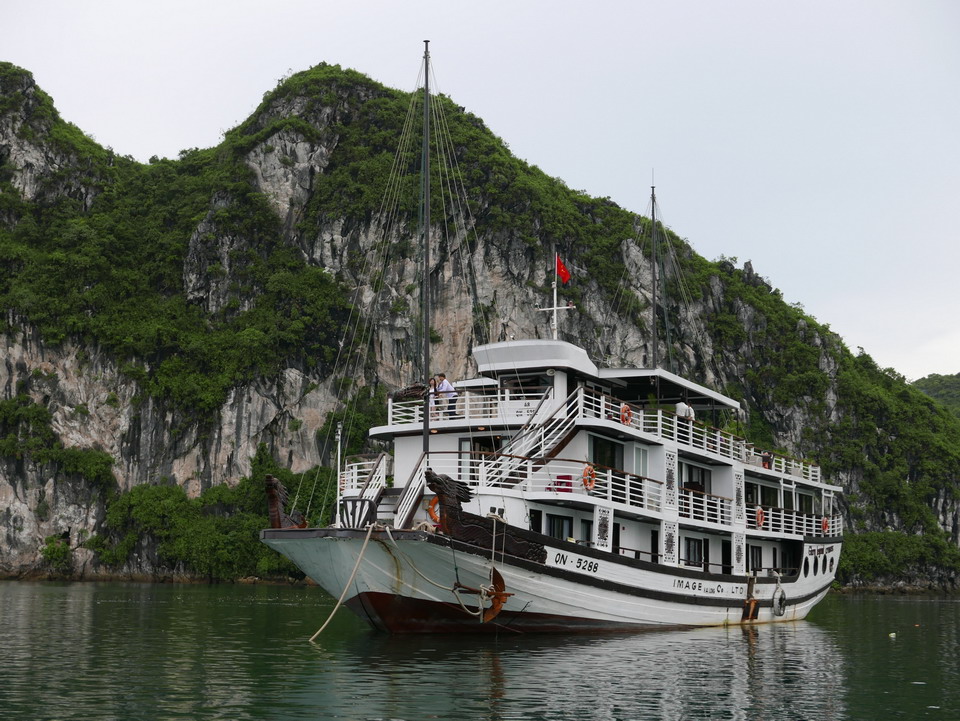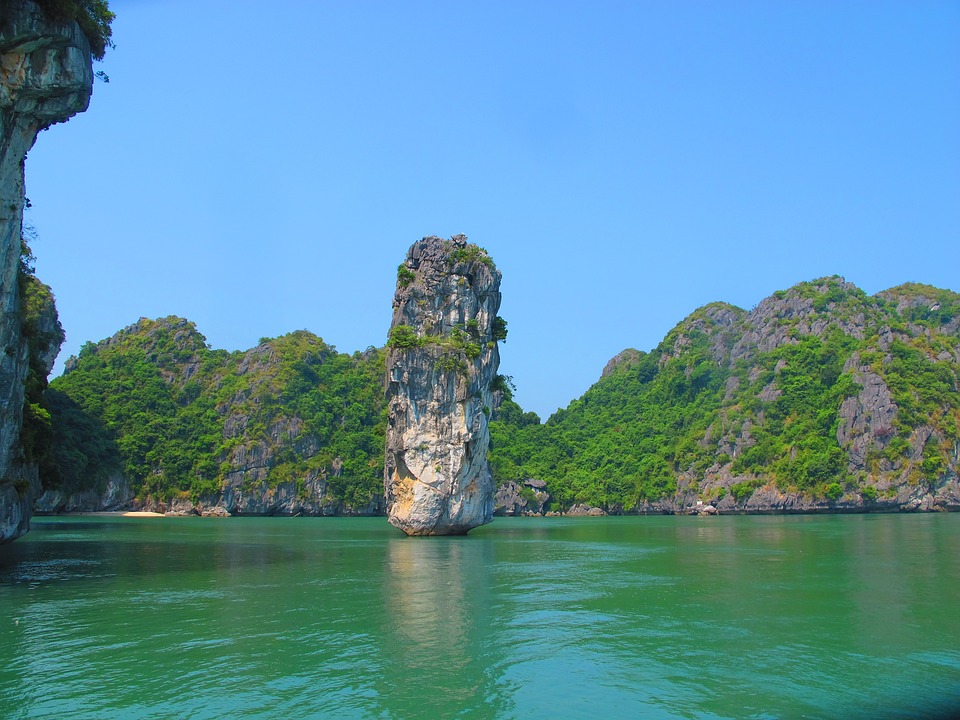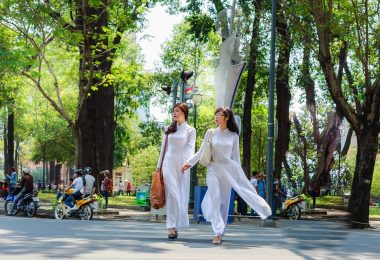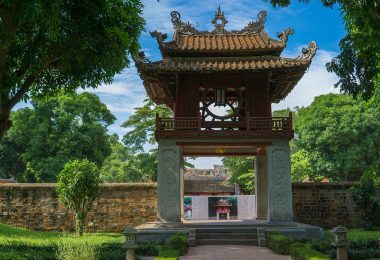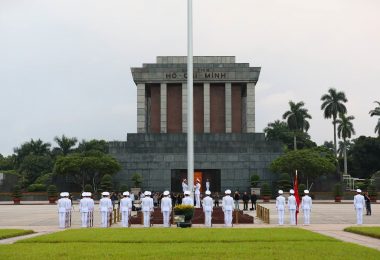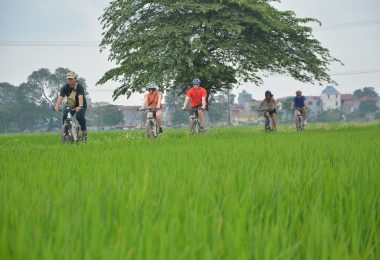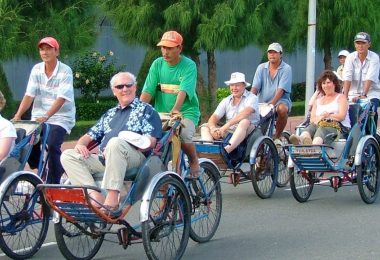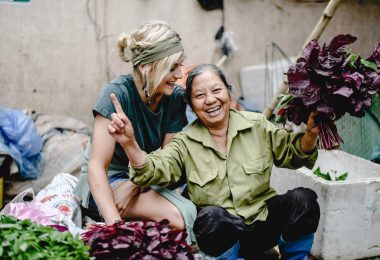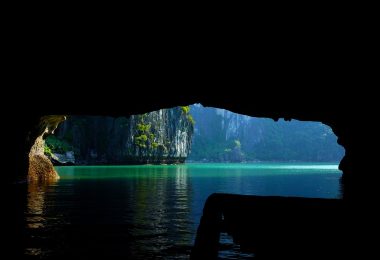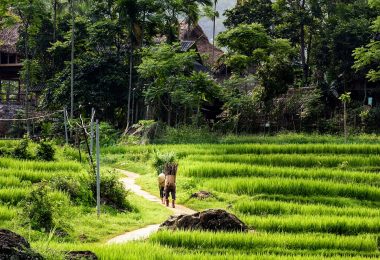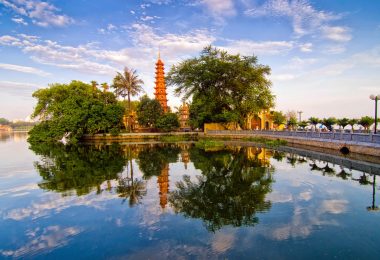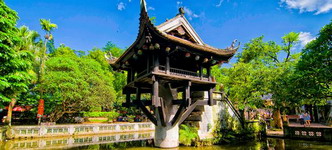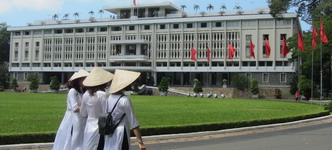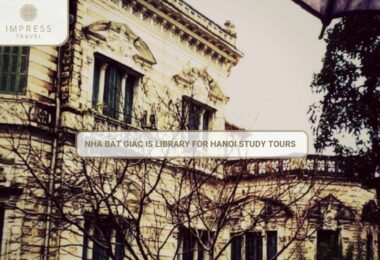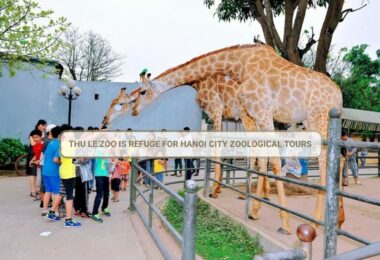Hanoi, the capital of Vietnam’s thousand years of civilization, is a destination with many fascinating historical and cultural sites. Below is detailed information about ticket prices and special features at 10 prominent locations in Hanoi.
1. Ho Chi Minh’s Mausoleum
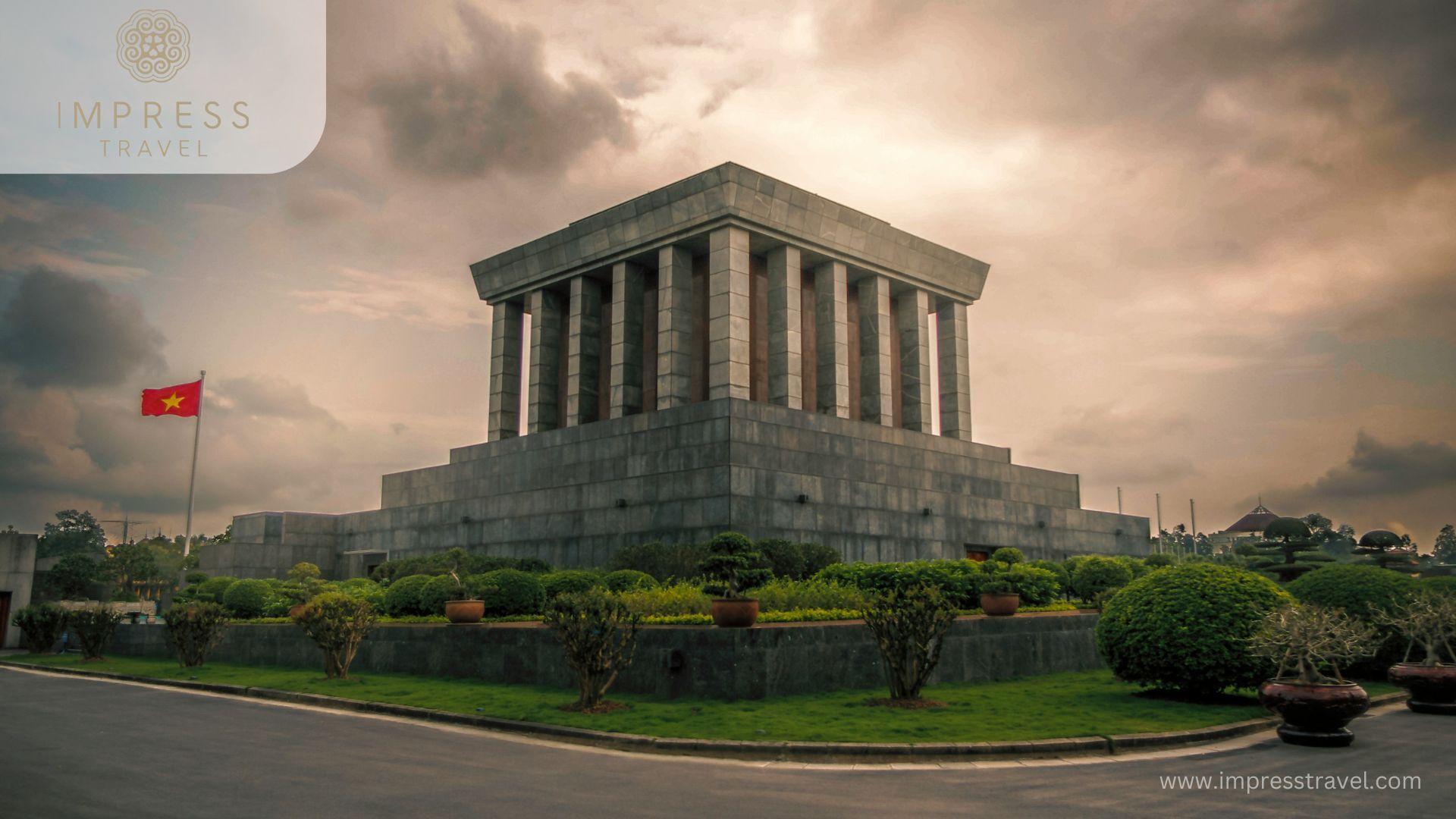
Ho Chi Minh Mausoleum
Fare: Free (travelers need to comply with dress and security regulations)
Detailed description:
President Ho Chi Minh’s Mausoleum, located at Ba Dinh Square, Hanoi, is the resting place of President Ho Chi Minh, the beloved leader of the Vietnamese people. The mausoleum was built from 1973 to 1975, with solid and solemn architecture, surrounded by rows of green bamboo, symbolizing longevity and peace. The mausoleum grounds also include the historic Ba Dinh Square, where Uncle Ho read the Declaration of Independence, giving birth to the Democratic Republic of Vietnam on September 2, 1945.
2. Hoa Lo prison in Hanoi
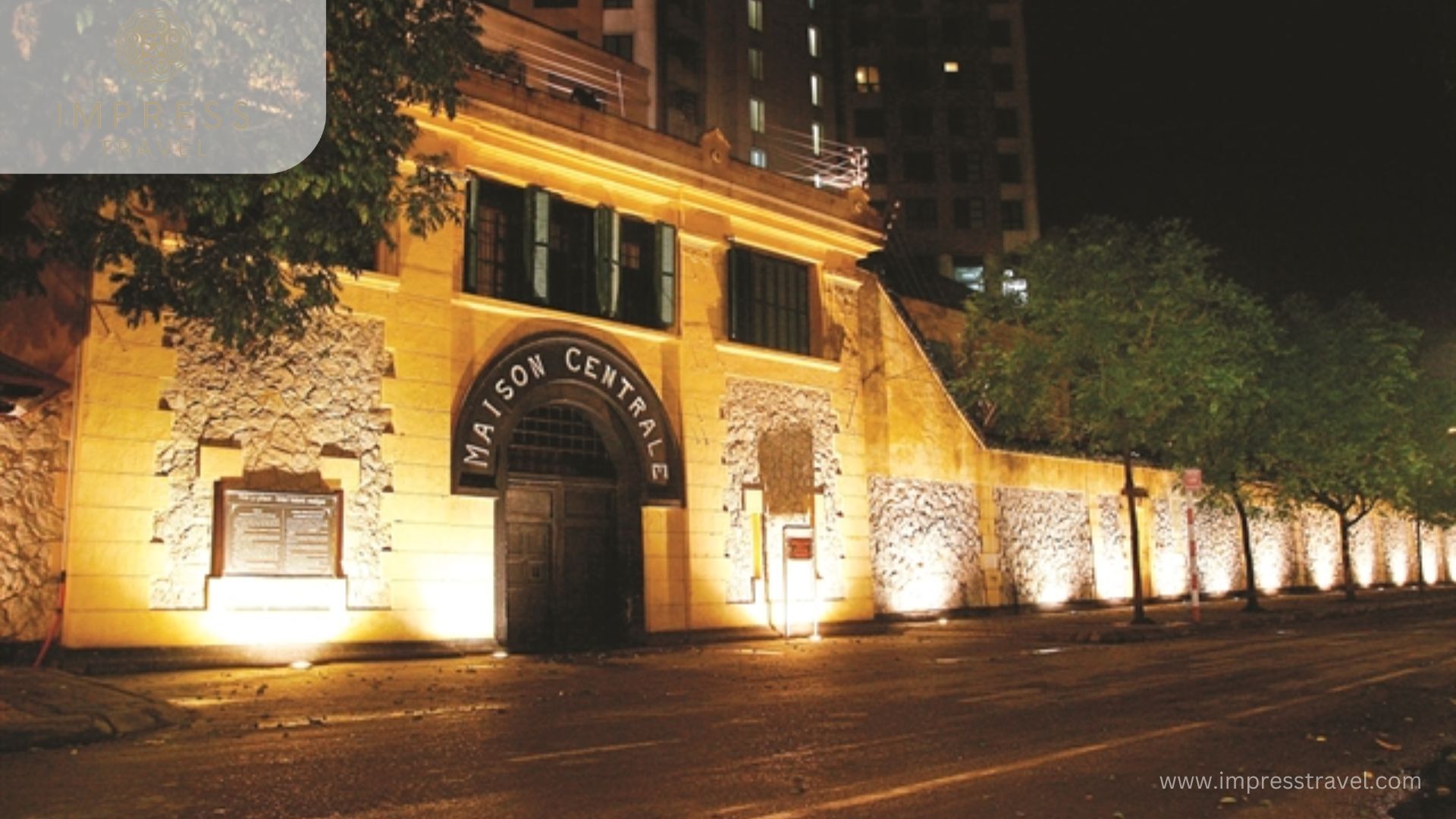
Hoa Lo Prison
Fare: 50,000 VND/person
Detailed description:
Hoa Lo Prison, also known as “Hanoi Hilton" by American prisoners of war, is an important historical site in Hanoi. Built by French colonialists in the late 19th century, the prison was originally used to detain Vietnamese patriots and revolutionary soldiers. Hoa Lo Prison carries within it the painful but resilient stories of Vietnamese revolutionary soldiers in the struggle for independence. Currently, the prison has been converted into a museum, displaying many artifacts and historical documents, helping visitors better understand the harsh life of the prisoners and their indomitable spirit.
3. One Pillar Pagoda in Hanoi

One Pillar Pagoda
Fare: Free of charge
Detailed description:
One Pillar Pagoda, also known as Dien Huu Pagoda, is one of the famous cultural and spiritual symbols of Hanoi. Built in 1049 during the reign of King Ly Thai Tong, the pagoda has a unique architecture with a small pagoda built on a stone pillar in the middle of a lotus pond, symbolizing a blooming lotus. According to legend, King Ly Thai Tong dreamed of Guanyin Buddha sitting on a lotus, so he built this pagoda to show his respect. One Pillar Pagoda is not only a spiritual destination for many Buddhists but also a place that attracts a large number of domestic and foreign tourists because of its architectural beauty and special historical value.
4. Sword Lake (Hoan Kiem Lake)
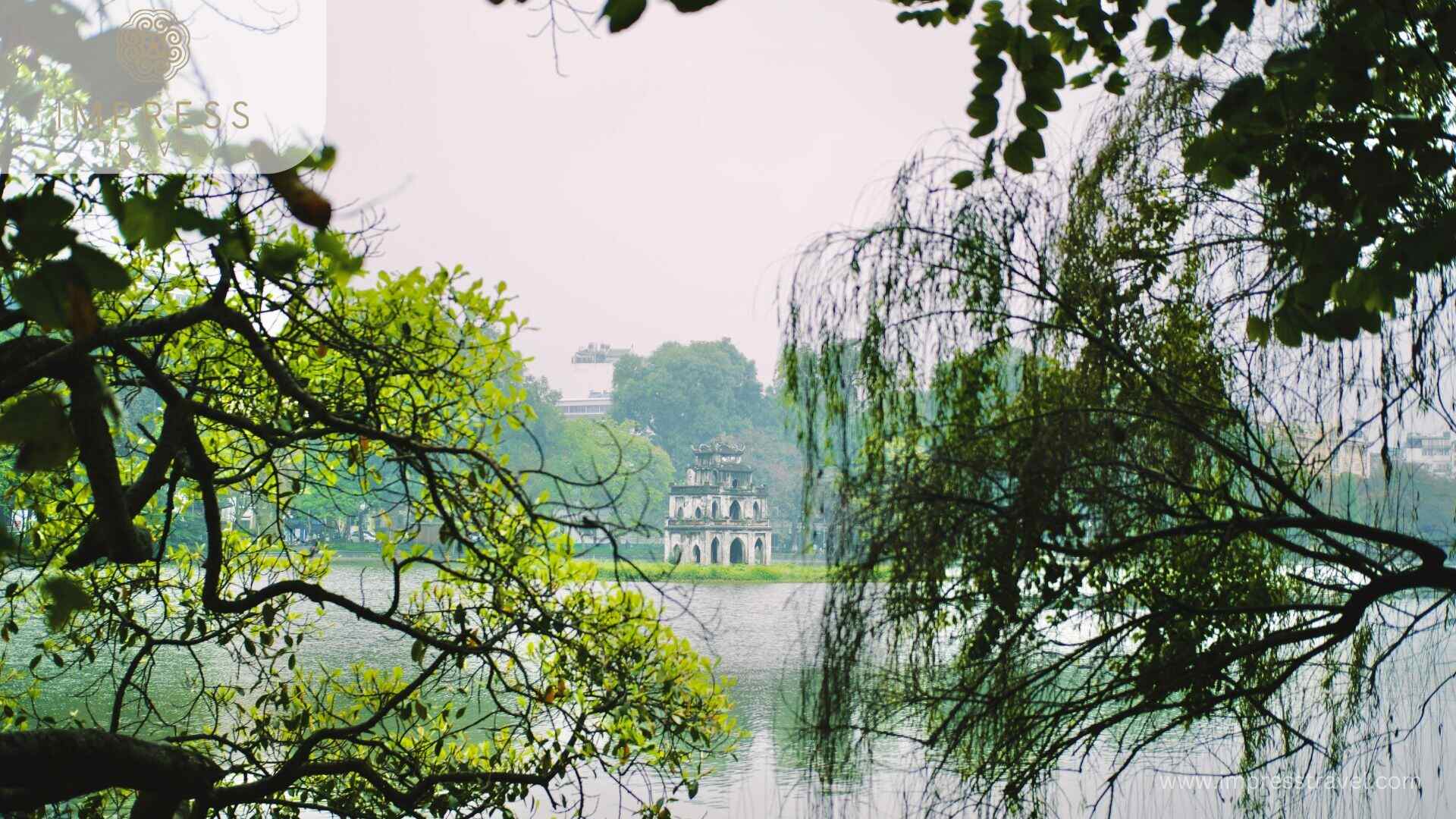
Hoan Kiem Lake
Fare: Free of charge
Detailed description:
Sword Lake, also known as Hoan Kiem Lake, located in the center of Hanoi, is one of the most famous and attractive destinations of the capital. Sword Lake is associated with the legend of King Le Loi and the magic sword, a symbol of patriotism and independent spirit. Around the lake are famous architectural works such as Turtle Tower, Ngoc Son Temple, and The Huc Bridge. Turtle Tower is located in the middle of the lake, creating a poetic and peaceful scene, while Ngoc Son Temple and The Huc Bridge provide a spiritual and historical space. Hoan Kiem Lake is not only an ideal place for strolling and relaxing but also a place where many vibrant cultural and artistic activities of Hanoi people take place.
5. Hanoi Old Quarter
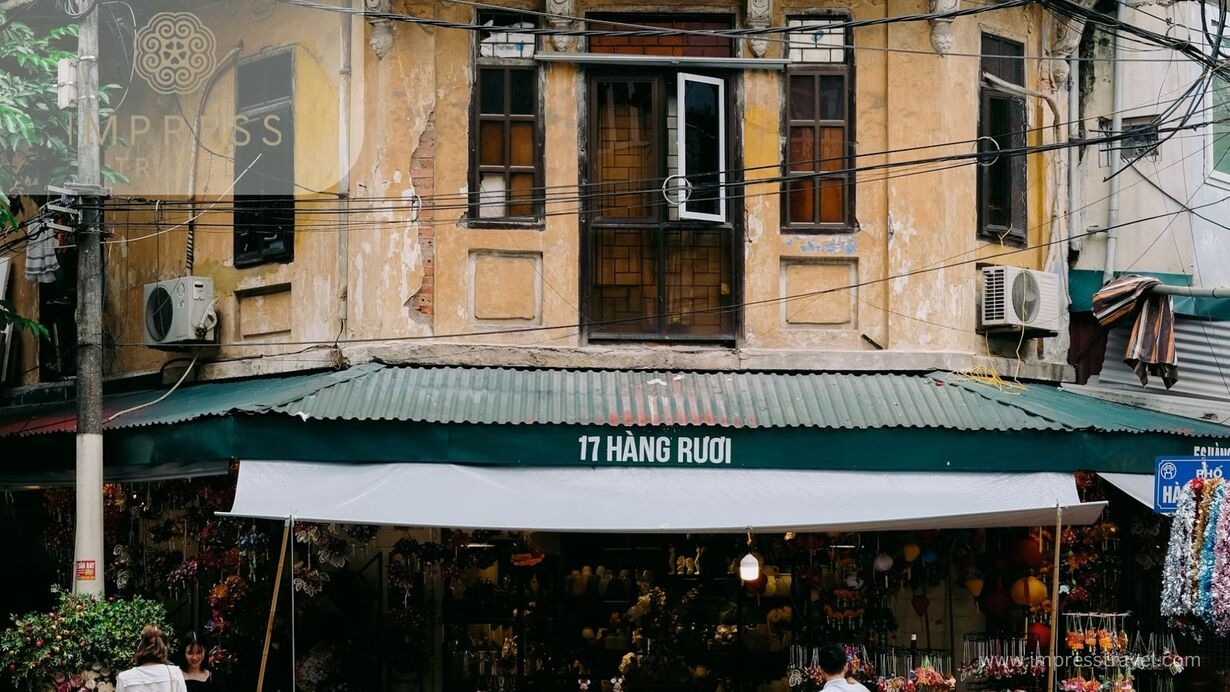
Hanoi Old Quarter
Fare: Free (cost depends on shopping and dining activities)
Detailed description:
Hanoi Old Quarter, with 36 streets, is a place that preserves the unique traditional culture of the capital. Each street in the Old Quarter bears the name of a craft or a typical product, such as Hang Dao, Hang Ngang, Hang Duong. Coming to the Old Quarter, visitors will be immersed in a lively, bustling space with ancient houses, traditional shops and street vendors. Hanoi‘s Old Quarter is also famous for its rich and attractive street food, from pho, bun cha, banh cuon to egg coffee. Walking around the Old Quarter, visitors will feel part of the soul of Hanoi, where the past and present intersect.
6. Long Bien Bridge of Hanoi
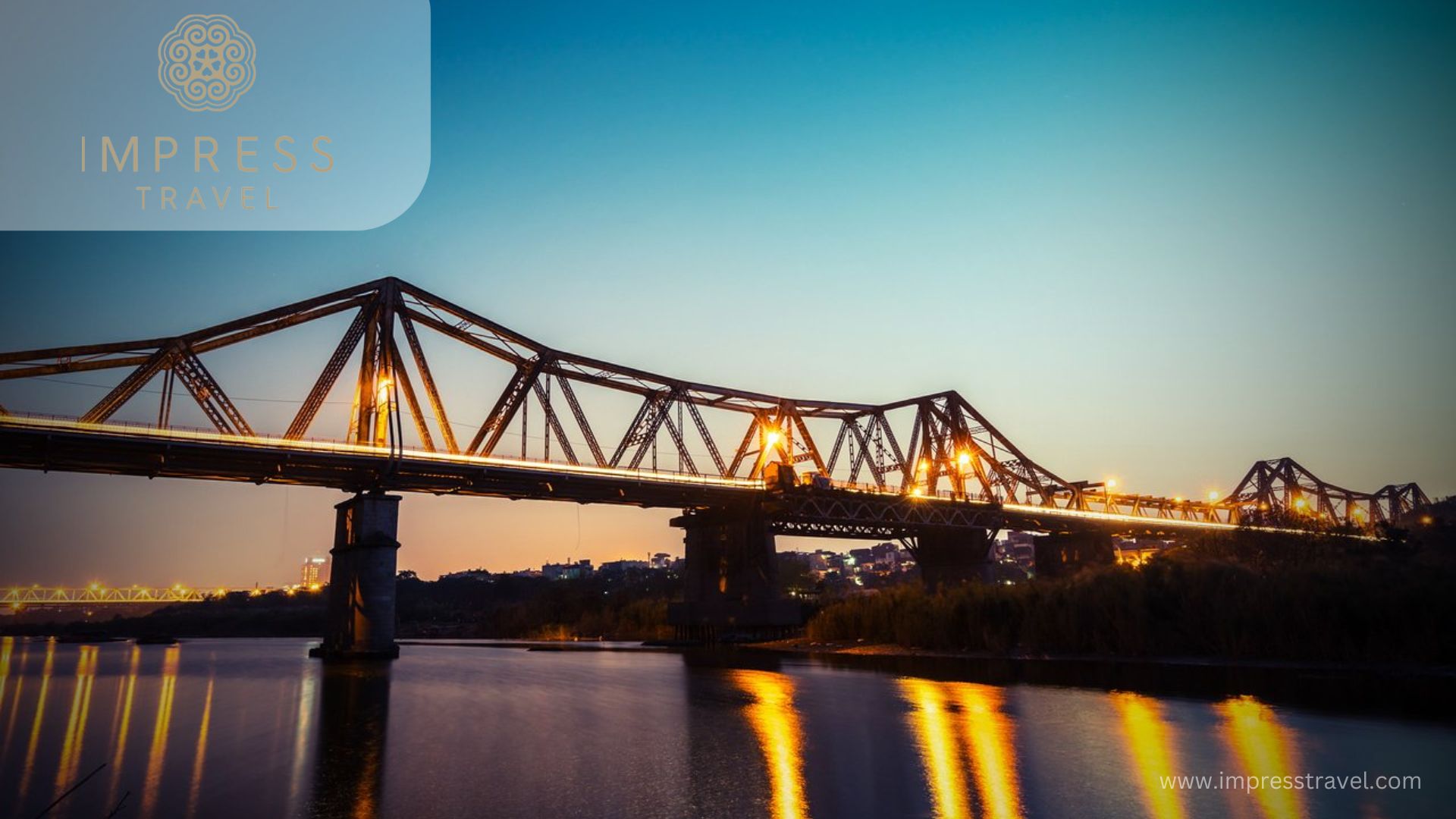
Long Bien Bridge in Hanoi
Fare: Free of charge
Detailed description:
Long Bien Bridge, built by the French in the early 20th century, is one of the historical symbols of Hanoi. This more than 1,600-meter-long steel bridge spans the Red River, connecting the two banks of the capital. Long Bien Bridge is not only an important transportation project but also a witness to many important historical events, from the French colonial period, the war against France, to the war against America. Walking on Long Bien Bridge, visitors can watch the rushing Red River and feel the imprints of time engraved on each iron bar and each weld of the bridge.
7. Ngoc Son Temple in Hanoi
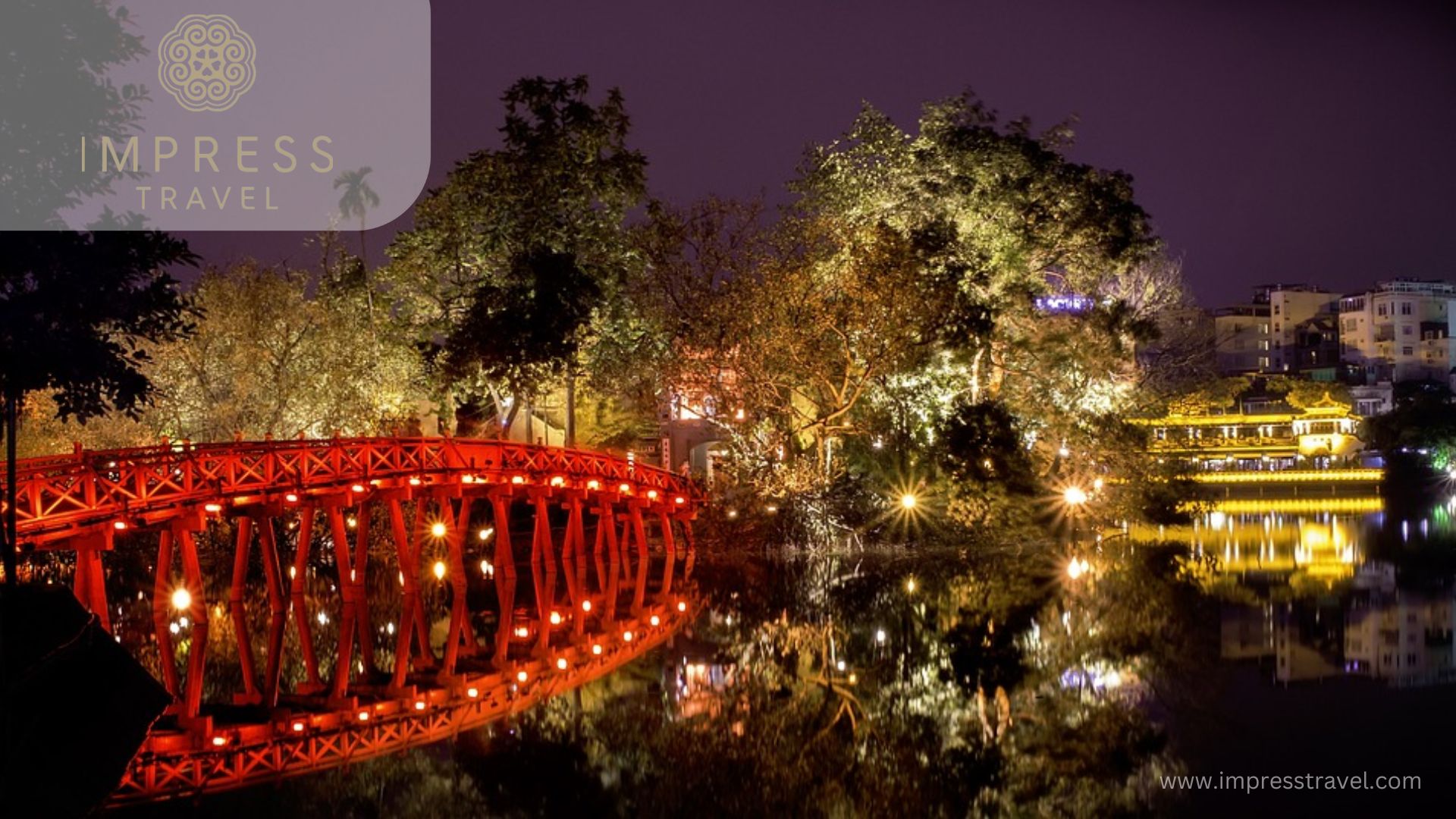
Ngoc Son Temple
Fare: 30,000 VND/person
Detailed description:Ngoc Son Temple, located on Ngoc Island in the middle of Hoan Kiem Lake, is one of the important historical and cultural relics of Hanoi. Built in the 19th century, the temple worships gods, including Tran Hung Dao – a talented general who defeated the Mongol army. To reach the temple, visitors must pass The Huc Bridge – a red bridge curved like a shrimp, standing out among the blue water of the lake. Ngoc Son Temple is not only a place of spiritual reverence but also an attractive attraction with unique architecture, beautiful landscapes and interesting historical stories.
8. Temple of Literature of Hanoi
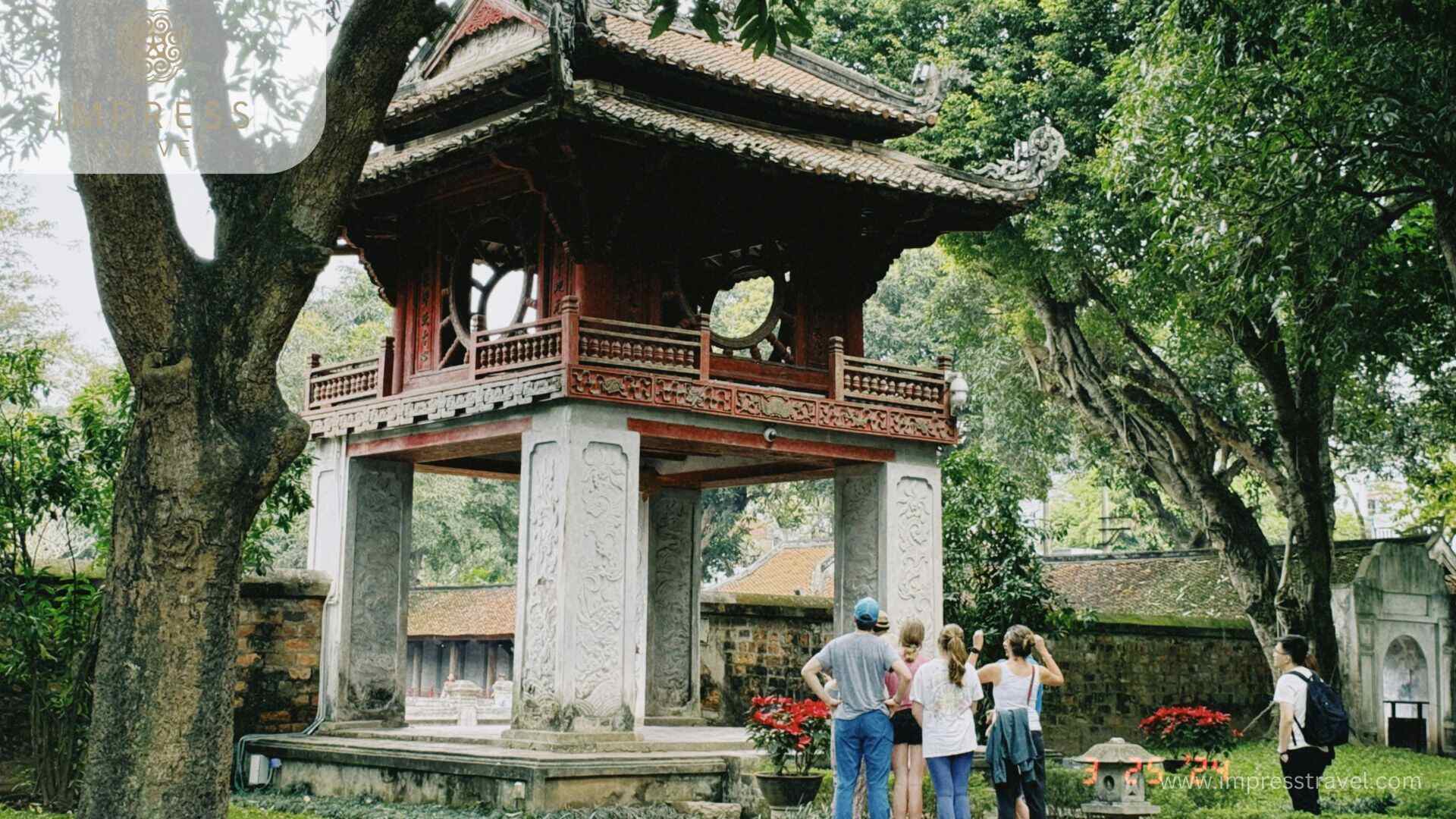
The Temple of Literature
Fare:
- Adults: 30,000 VND/person
- Students: 15,000 VND/person (present student card)
- Children under 15 years old: Free
Detailed description:
Temple of Literature – Quoc Tu Giam, located in the center of Hanoi, is one of the most important historical and cultural relics of Vietnam. Built-in 1070 during the reign of King Ly Thanh Tong, the Temple of Literature was originally a place to worship Confucius and Confucian sages. By 1076, Quoc Tu Giam, Vietnam’s first university, was established here to train talented people for the country. The Temple of Literature campus includes many ancient and solemn architectural works such as Tam Quan Gate, Van Lake, Khue Van Cac and Doctor’s Garden, all of which are imbued with cultural and historical significance.
One of the most prominent features of the Temple of Literature is the Doctor’s Garden, where 82 doctoral stone steles are placed, registering those who passed the Imperial examinations from the 15th to the 18th century. These stone steles are placed on the turtle’s back, symbolizing longevity and wisdom. Khue Van Cac, built in 1805, is also an important symbol of Hanoi, symbolizing wisdom and learning. With unique architecture and peaceful space, the Temple of Literature – Quoc Tu Giam is an ideal destination for tourists to learn about the history of Vietnamese education and enjoy a peaceful space in the heart of the city.
9. Imperial Citadel of Thang Long
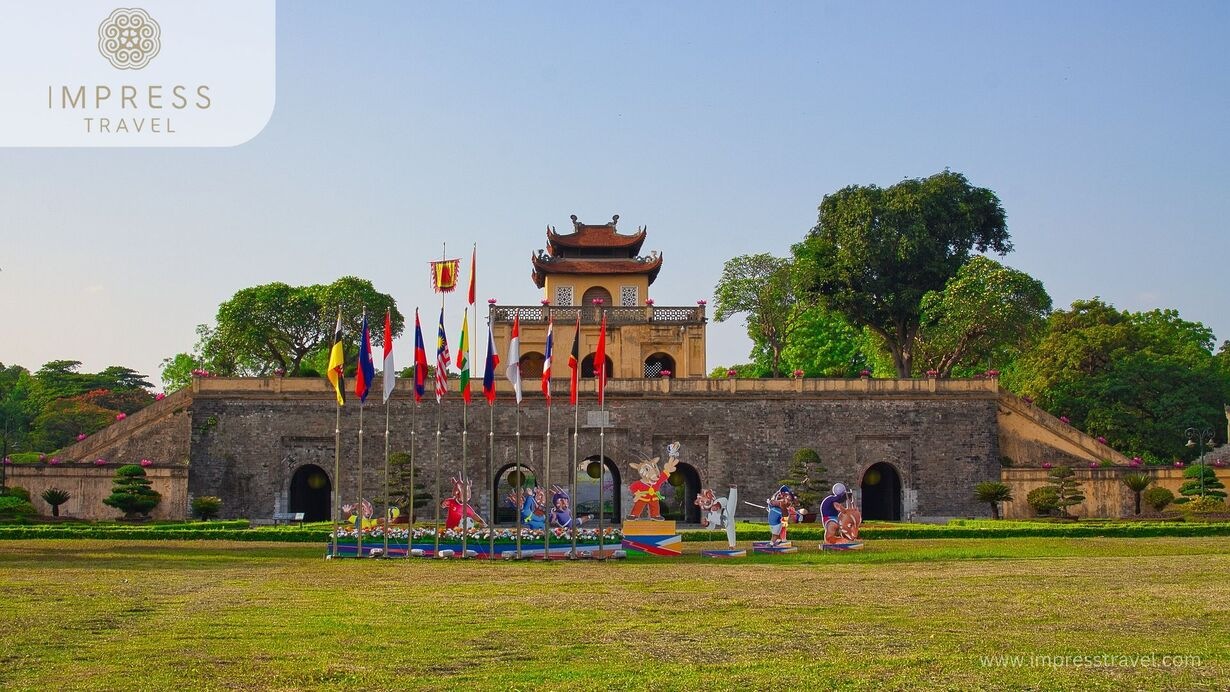
Imperial Citadel of Thang Long
Fare:
- Adults: 30,000 VND/person
- Students: 15,000 VND/person (present student card)
Detailed description:
The Imperial Citadel of Thang Long is one of Hanoi‘s most important historical and cultural relics, recognized by UNESCO as a World Heritage Site in 2010. Built in the 11th century under the Ly and Hoang dynasties, Thang Long Citadel was not only the political, military and cultural center of Vietnam through many dynasties but also a symbol of the longevity and prosperity of the ancient capital Thang Long.
One of the most attractive spots of Thang Long Imperial Citadel is the 18 Hoang Dieu Archaeological Site, where archaeologists have unearthed many valuable artifacts from the Ly, Tran, Le and Nguyen dynasties. Archaeological sites include palace foundations, city walls and many ceramic artifacts, jewelry, and daily life tools, helping visitors gain a deeper insight into the history and culture of the economy. Thang Long Citadel through dynasties.
Visiting Thang Long Imperial Citadel, visitors can not only admire important historical relics but also learn about the formation and development process of Thang Long Citadel, as well as the historical events that took place. here. This is a destination not to be missed when you want to explore the culture and long history of Hanoi and Vietnam.
10. Vietnam Museum of Ethnology
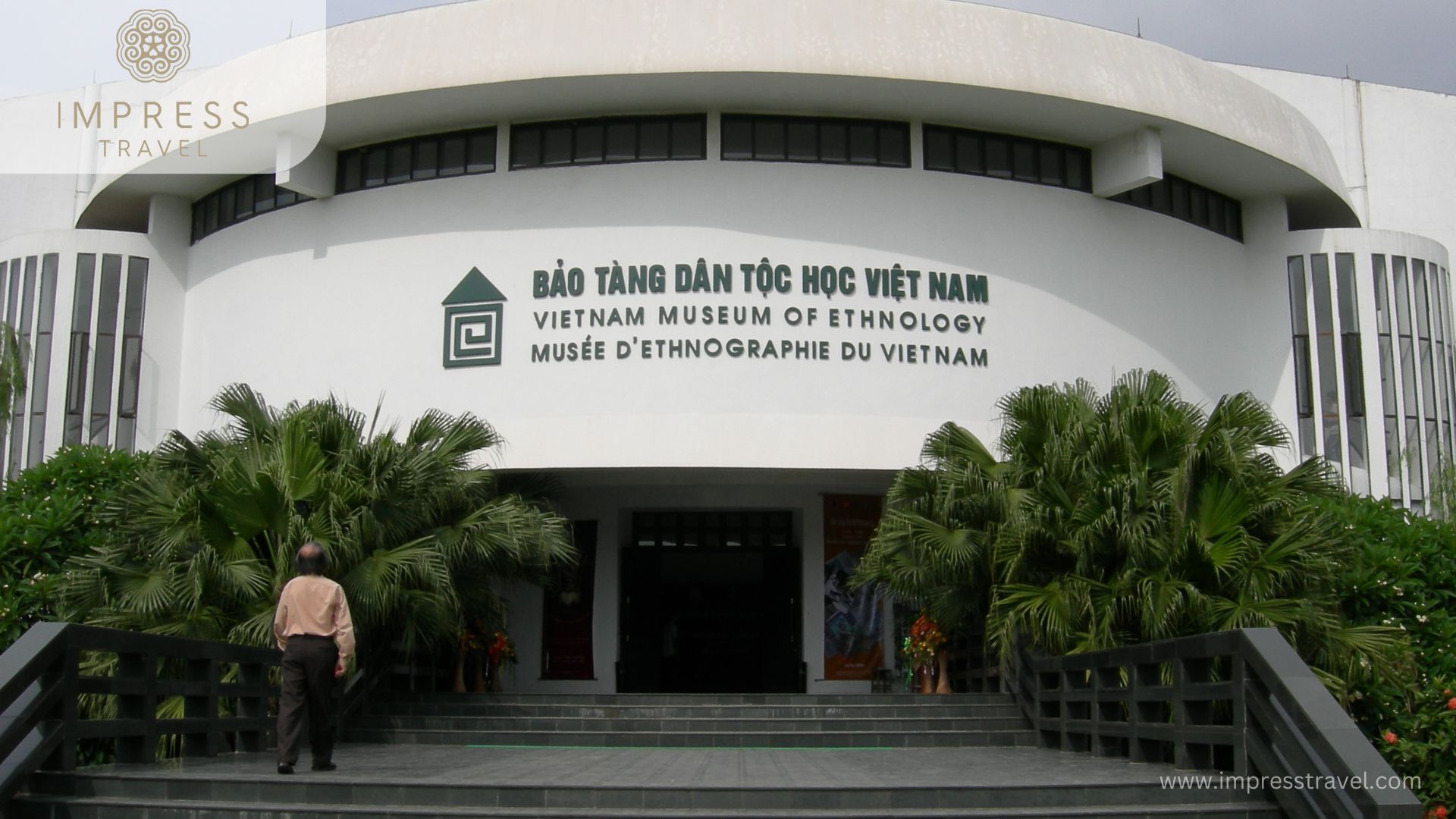
Vietnam Museum of Ethnology
Fare:
- Adults: 40,000 VND/person
- Students: 15,000 VND/person (present student card)
- Students: 10,000 VND/person
Detailed description:
The Vietnam Museum of Ethnology, located in Hanoi, is one of Vietnam’s leading museums, specializing in displaying and researching ethnic minorities across the country. Established in 1997, the museum is a place to store and introduce precious artifacts, costumes, houses and traditional living items of 54 ethnic groups. The museum campus is divided into two main areas: an indoor display area and an outdoor display area. The indoor display area introduces artifacts, documents and images about the cultures and customs of ethnic groups, while the outdoor display area recreates traditional houses, such as the stilt houses of the ethnic groups. Tay, the long house of the Ede people and the communal house of the Ba Na people.
Conclusion
Hanoi is an attractive destination with many historical and cultural sites worth exploring. Each location has its own story and value, helping visitors gain a deeper understanding of the history and culture of the thousand-year-old capital. Understanding ticket prices and related information will help visitors have a convenient and memorable visit.
Don’t forget to regularly follow our Facebook page and Website for more interesting information about traveling to Hanoi and to book Hanoi tours at the best prices.










































